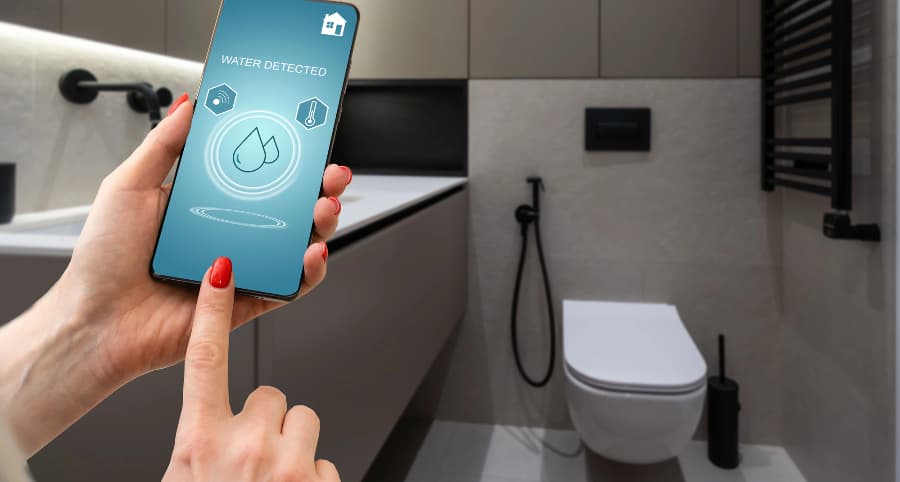How does a water sensor work and why use one with your State College smart home?

One tiny leak in your home can cause big problems and thousands in damage. You need to safeguard against this threat; luckily, there’s a straightforward way to do so. A water sensor is an affordable, simple, and effective solution. Explore how they work and why you should incorporate water sensors into your State College smart home.
How water sensors shield State College your home
Water enters homes in various ways, whether from a plumbing issue, storm-related incident, appliance breakdown, or simple human error. However it occurs, you have to know right away, and this is how water sensors help. But how exactly do they work?
Most water sensors are conductive and function with two electrodes. When water infiltrates the space between the electrodes, an electrical link is created, setting off your alarm. You’ll also come across capacitive sensors that emit an electrical field. When water reaches the conductive surfaces of these components, the field is interrupted, and your alarm activates. Optical sensors employing infrared LED light are an additional possibility.
Get more from your water sensor
A few specialized water sensors give you even more protection as they have built-in temperature sensors. This is an exceptional tool in preventing pipe freezing. If there’s a drastic reduction in temperature, you’ll be notified immediately. Taking measures before pipes break will save you from water infiltration and expensive repairs.
Why incorporate water sensors into your State College smart home?
When water emergencies occur, you must be warned immediately. You can attain this aim by integrating water sensors into your smart home. Whether you’re on site to hear the alarm or not, you’ll be sent an immediate notification on your smartphone. As an additional backup, your 24-hour monitoring agents will be notified. Every moment matters in a water emergency to minimize the damage and disturbance to your household.
Where should you put water sensors?
Any area prone to an influx of water is an appropriate position for water sensors. Think about installing in these locations:
- Bathrooms: Place at the back of toilets or close to bathtubs.
- Basements: Water commonly infiltrates basements through damaged walls or because of excess rain or broken sump pumps.
- Around water heaters or appliances: Any water-utilizing appliance may leak in time.
- Under sinks: Water sensors are perfect for identifying pipe leaks in areas not easy to see.
- Attics: Identify roof leaks quickly and prevent costly repairs.
Get water sensors with your Vivint smart home
Give your property the comprehensive protection it needs with Vivint’s modern devices. Our water sensors in State College integrate with your Vivint mobile app to provide immediate updates whenever your alarm goes off. You also benefit from integrated temperature sensors to avoid pipe freezing. Explore the smart home tools available in State College by calling (814) 752-4276 today.
